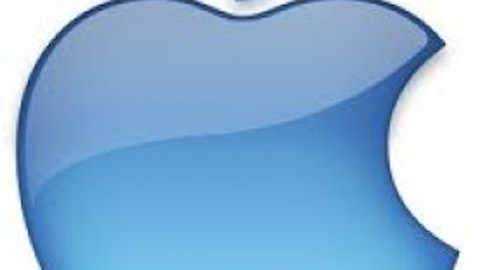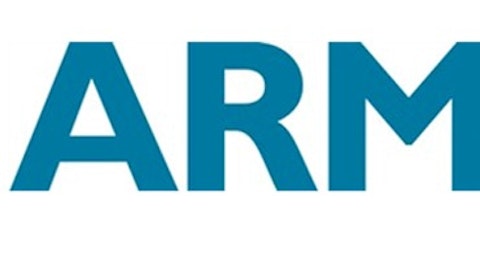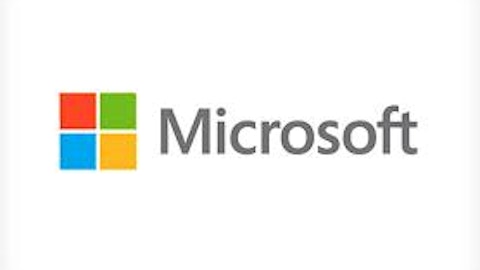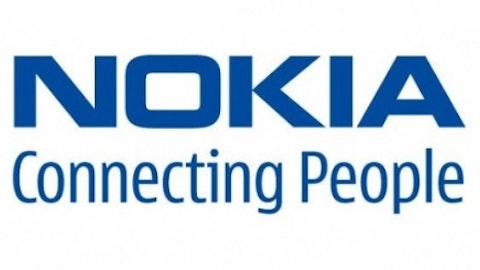
The disappointment
Mr. Softy reported net income of $0.66 per share on revenue of $19.9 billion, whereas analysts were looking for $0.75 per share in net income and $20.73 billion in revenue. Microsoft Corporation (NASDAQ:MSFT) continued to suffer from a declining PC market as consumers are switching from PCs to tablets at a rapid rate. In addition, Microsoft’s attempt to gain share in the tablet market ended up as a flop.
Microsoft Corporation (NASDAQ:MSFT) ended up writing off its inventory of Surface RT tablets as it wasn’t that profitable an idea for the company. The write-off was as large as $900 million. Investors panicked and quickly pushed the “Sell” button, triggering a plunge of 11% in shares. On a single day, $35 billion evaporated from Microsoft’s market cap.
But not all is gloom and doom. For the full-year, Microsoft Corporation (NASDAQ:MSFT) generated $77.85 billion, up from $73.72 billion that was generated in 2012. Microsoft’s operating expenses fell from $34.43 billion to $30.83 billion, which increased the operating profit from $21.76 billion to $26.76 billion.
As a result, net income rose from $16.98 billion to $21.86 billion, translating into $2.61 per share, up from $2.02 per share in 2012. This is impressive because the company’s good results came at a time when the PC industry is suffering sharp declines
A tale of two giants
Microsoft Corporation (NASDAQ:MSFT) officially joined the caravan of technology companies that missed expectations. Earlier last week, Intel Corporation (NASDAQ:INTC) reported an earnings miss and got punished by Mr. Market. Similarly to Microsoft, Intel attributed the main cause of its losses to the declining PC market.
After all, fewer PCs require fewer chips. I believe there are a few solid reasons why investors in these two giants can sleep tight despite these earning misses, and should even take advantage of this dip to buy more shares.
Reason number one: Leaders, at all times
Both Intel Corporation (NASDAQ:INTC) and Microsoft are the indisputable leaders of their industries. Microsoft, for example, controls 92% of the Operating Systems market, while Intel controls roughly 80% of the market for microprocessors. And this dominant edge isn’t disappearing. In fact, it should get wider due to capital investments expected in the future, as measured by expenses on research and development (R&D).
Intel Corporation (NASDAQ:INTC)’s spending on R&D rose from $5.7 billion in 2008 to $10.2 billion last year. This figure is likely to rise to somewhere in the $12 billion area this year. Microsoft, as well, is widening its economic moat by investing in R&D. Mr. Softy invested $8.7 billion in R&D back in 2010, compared to $9.8 billion for 2012. It’s also worth noting that this $1.1 billion rise in R&D has lead to an incremental $11.5 billion in sales.
This intensive investment in R&D simply destroys other competitors. Microsoft Corporation (NASDAQ:MSFT) is a virtual monopoly in the OS market, while Intel’s rival Advanced Micro Devices, Inc. (NYSE:AMD) has turned into a mediocre, unprofitable business. It lost over $1.1 billion in 2012 alone. But, the more worrisome fact is its sales trend.
Advanced Micro Devices, Inc. (NYSE:AMD) had sales of $6.5 billion in 2010, with only $5.4 billion of sales in 2012. This only means that Intel is stealing its market share. Perhaps, that’s the direct result of AMD’s relatively low investment in R&D. In 2012, AMD invested only $1.3 billion in R&D; that’s almost one eighth of what Intel invested in the same year. Now, who do you suspect will come out with quicker, more advanced chips in the year 2020 — Advanced Micro Devices, Inc. (NYSE:AMD) or Intel?
Reason number two: Shareholder rewards
Last year, Intel paid $9.2 billion in dividends and share repurchases. This amounts to roughly 50% of its annual cash from operations. That’s a phenomenal shareholder yield which assures that your slice of the Intel pie is growing larger, and faster. Contrast that to AMD, which pays no dividends and only spent $14 million in 2012 acquiring its shares.
Microsoft Corporation (NASDAQ:MSFT), for example, paid $9.5 billion in dividends and share repurchases last year, which equates to 30% of the company’s annual cash flow from operations. That’s lower than Intel’s, but still remarkable.
Reason number three: Fortress balance sheet
Intel finished 2012 with more than $18 billion in cash and investments and around $13 billion in debt. It could pay off all its debts and still have billions left over. With an annual cash flow stream of $7.9 billion, this should come as no surprise to you. That makes Intel one of the safest stocks in the world.
AMD, on the other hand, has more than $2 billion in debt and less than $1 billion in cash and investments. That’s a far cry from Intel. Mr. Softy ended the year with more than $63 billion in cash and investments and around $11 billion in debt. No wonder Microsoft has a higher “credit score” than that of the U.S. government.
My Foolish conclusion
Investors in Intel and Microsoft Corporation (NASDAQ:MSFT) can sleep tight. A few weeks from now, no one’s going to remember their earnings miss. What people will remember is their superb cash flow generation and high dividends. That’s because fundamentals always rule at the end. Just keep your fingers off the “Sell” button in the meantime.
The article Don’t Lose Sleep Over Microsoft! originally appeared on Fool.com and is written by Shmulik Karpf.
Shmulik Karpf has no position in any stocks mentioned. The Motley Fool recommends Intel. The Motley Fool owns shares of Intel and Microsoft. Shmulik is a member of The Motley Fool Blog Network — entries represent the personal opinion of the blogger and are not formally edited.
Copyright © 1995 – 2013 The Motley Fool, LLC. All rights reserved. The Motley Fool has a disclosure policy.





